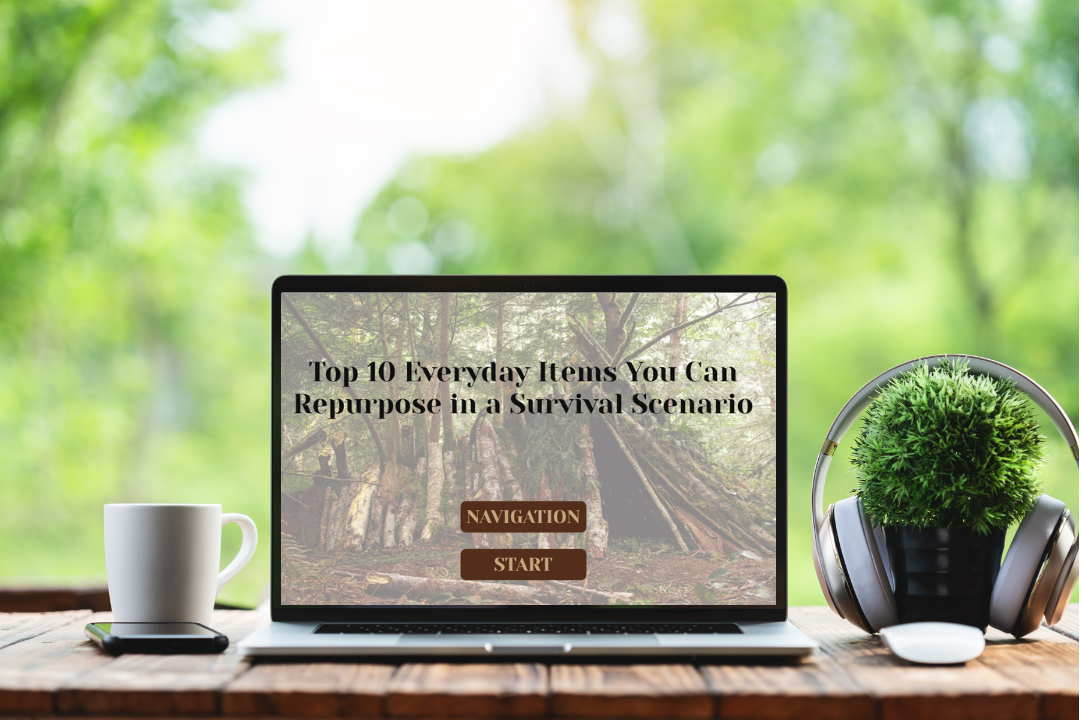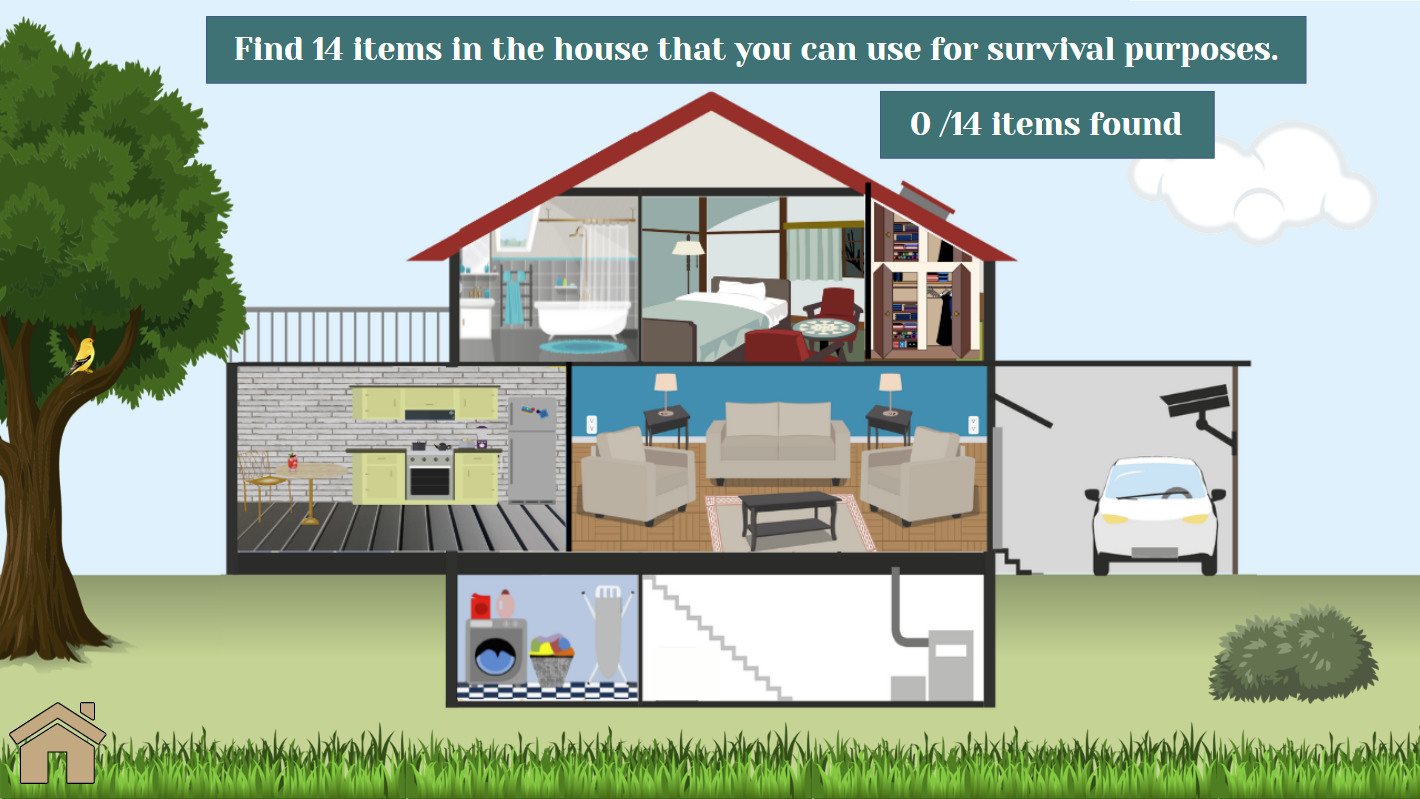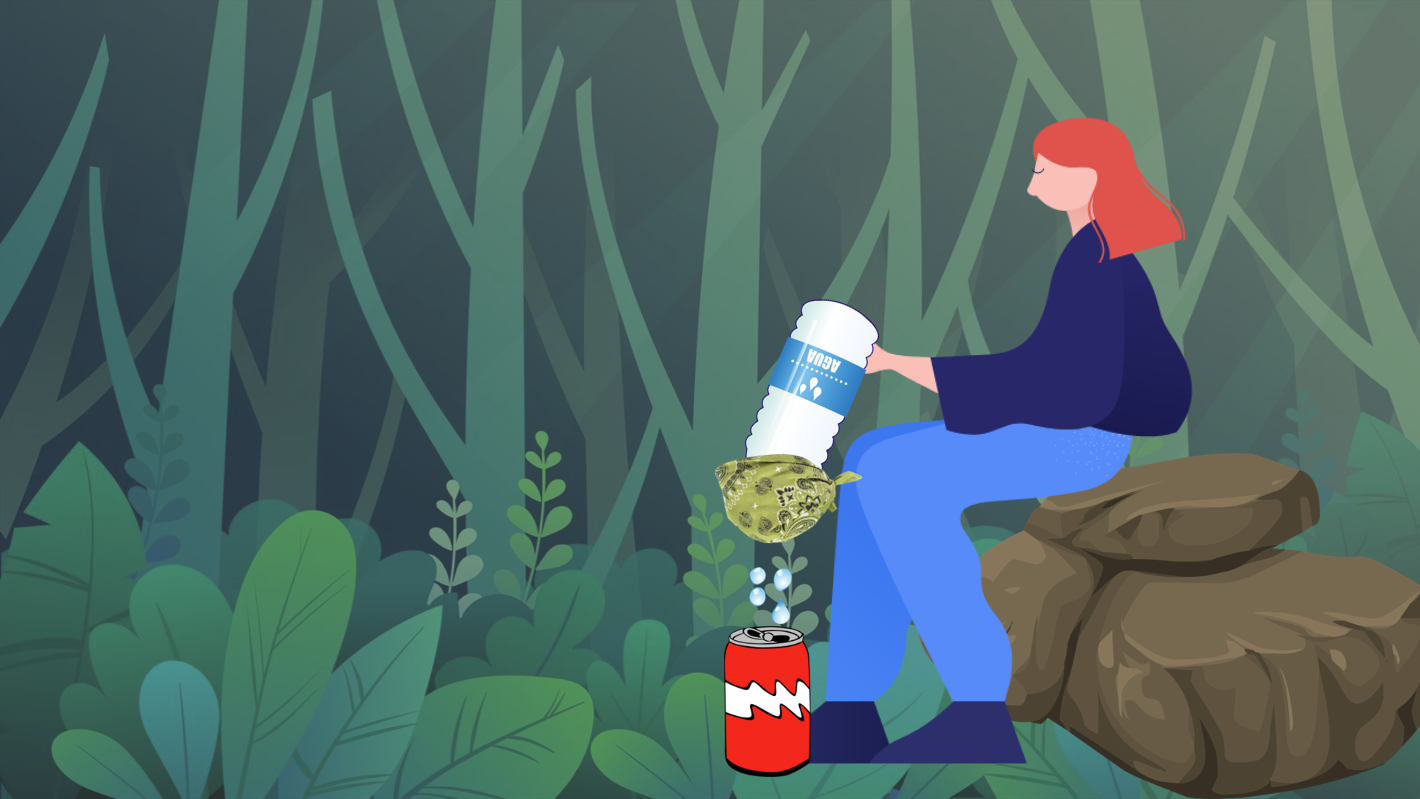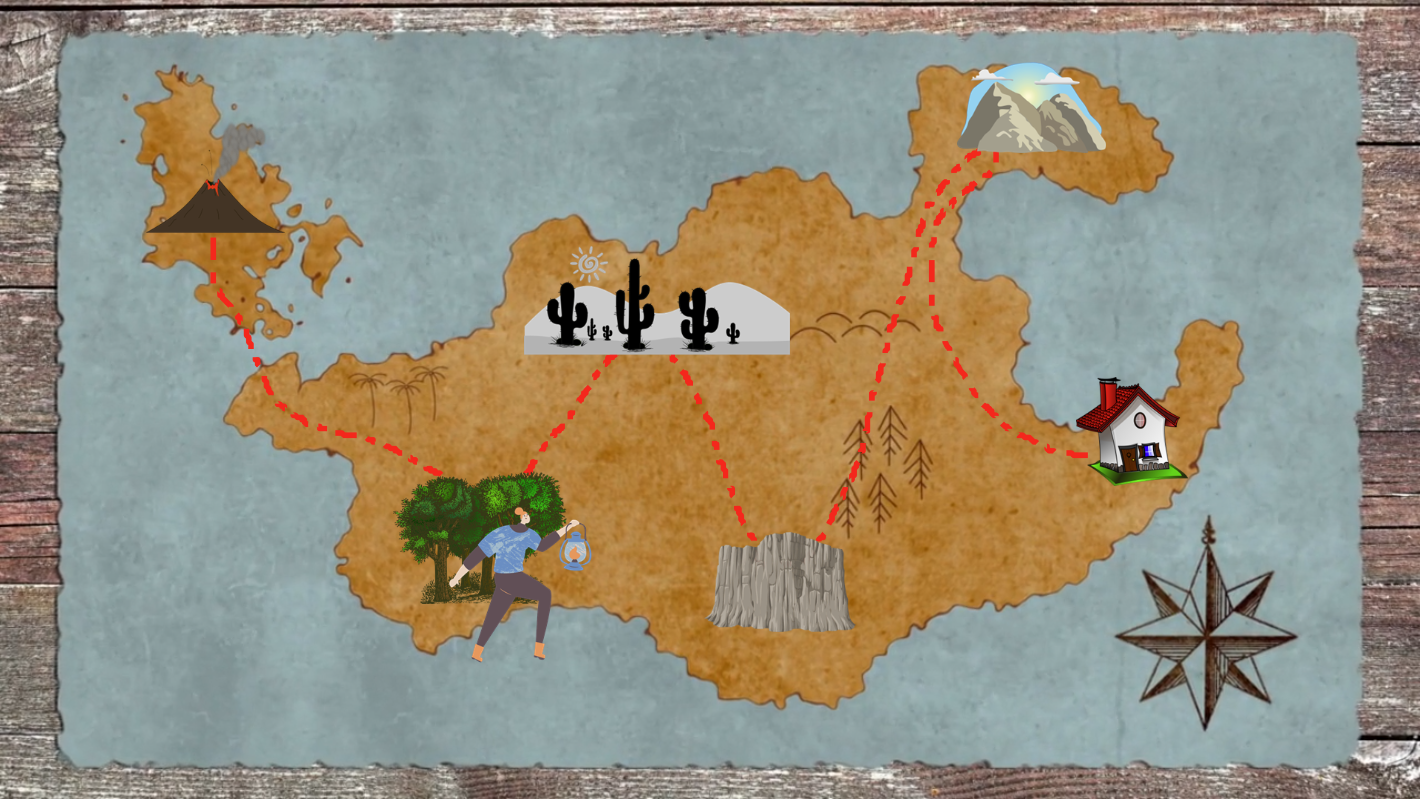Top 10 Everyday Items You Can Repurpose in a Survival Scenario
This Storyline 360 module was developed in response to an eLearning challenge that involved creatively revising a poorly written storyboard. The challenge aimed to test participants' creativity in transforming the original content. This 20-minute module, which I submitted, achieved a remarkable top-3 position out of all the entries, showcasing its effectiveness in improving the topic.
Responsibilities: eLearning Development, Graphic Design, Video Design
Tools: Articulate Storyline, WellSaid Labs, Snagit, Canva, Camtasia, PowerPoint
Responsibilities: eLearning Development, Graphic Design, Video Design
Tools: Articulate Storyline, WellSaid Labs, Snagit, Canva, Camtasia, PowerPoint
Overview
The primary objective of this module is to provide learners with practical knowledge about everyday items that can be repurposed for survival purposes. To ensure comprehensive coverage, the module is structured into three distinct phases: "Identify," "Prepare," and "Survive."
- Identify: In this phase, learners engage in an interactive experience where they must search their surroundings, such as a house, to identify items that could be valuable in a survival scenario. This hands-on exploration immerses learners in the process of recognizing potential resources within their immediate environment, thus enhancing their situational awareness and resourcefulness.
- Prepare: In this phase, learners are guided in exploring the versatile applications of the items they've identified. Through a series of engaging activities and scenarios, participants learn various creative and practical ways to use these everyday objects for survival, fostering problem-solving skills and adaptability.
- Survive: In the culminating phase, learners embark on an adventure that puts their newfound knowledge to the test. They are thrust into a simulated survival scenario where they must apply what they've learned to overcome challenges, earn badges as they reach milestones, and ultimately navigate their way back home successfully. This phase not only reinforces their understanding but also rewards their practical application of survival skills in a dynamic and motivating context.
- Accessibility Features: The course prioritizes accessibility by providing closed captioning for audio and video content. This ensures that participants with hearing impairments can access the spoken information. Transcriptions are also available for all spoken material, making the content accessible to a wider range of learners. These features promote inclusivity and compliance with accessibility standards.
- Storytelling: To make the learning experience engaging and relatable, the course incorporates storytelling. It weaves a compelling narrative throughout the course, using characters and scenarios to illustrate key concepts. Storytelling not only captures learners' interest but also helps them connect emotionally with the content, making it more memorable and impactful.
- Video and Simulations: The program utilizes a combination of video and simulations to facilitate learning. Video content provides visual and auditory explanations, enhancing the understanding of complex topics. Simulations allow learners to interact with scenarios, putting theoretical knowledge into practical use. This blend of media offers a dynamic and immersive learning experience that caters to different learning styles.
- Gamification: Gamification elements are integrated to motivate and engage learners. Participants are presented with challenges, quizzes, and interactive activities that make learning enjoyable and interactive. Points and rewards add a competitive and motivating aspect to the training. Gamification not only enhances participation but also reinforces retention and application of knowledge.



